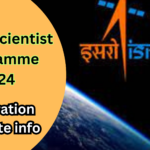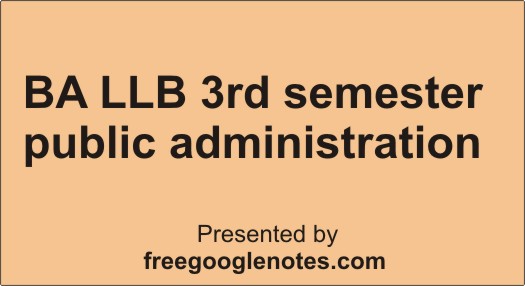BA LLB sociology first semester sample question answer social institutions of Indian Society: In this post you will read about Caste, caste example, caste system, list of caste in India, caste system hinduism, caste issues in India, lowest caste in hindu
Q.1. “Caste is a closed clan.” Discuss.
What is Caste? The word ‘caste is used in everyday life and we use it to distinguish one person from another. We say that such and such person belongs to a particular caste. In saying this we generally mean to convey that he is born of parents or is a member of the family said to belong to a particular çaste. In this way, caste is a hereditary group and in biology, the word is used only for descent or heredity. But this definition is inadequate for the purpose of sociology since it requires a more comprehensive and clarified definition.
Of the many definitions of caste offered by different scholar some are reproduced as under :
- 1. Sir Herbert Risley. Risley has written that “A caste may be defined as a collection of families or group of families bearing a common name which usually denotes or is associated with specific occupation claiming common descent from a mythical ancestor, human or divine; processing to follow the same professional calling and are regarded by those who are competent to give an opinion as forming a single and homogeneous community.”
Criticising this definition of caste, Huton has said that it is the people of clan who claim descent from a mythical ancestor and not members of caste.
2. Martindale and Monachesi. “A caste is an aggregate of persons who share of obligations and privileges is fixed by birth sanctioned and supported by religion and magic.” This definition of the caste is incomplete since it excludes several main characteristics of the caste.
3. Ketker. “A caste is a group having two characteristics : (1) membership is confined to those who are born of members and includes all persons so born, (2) the members are forbidden by inexorable social law to marry outside the group.” The two characteristics of the caste highlighted in this delicious do not hold water in all cases.
Now-a-days members of one caste wed members of other castes.” South India even people born outside the caste are at times included in the caste.”
(4) D.N. Majumdar’ and T.N. Madan. “A caste is closed group.” Expressing the same idea differently Cooley has written, “When a class is somewhat strictly hereditary, we may call it a caste.” The definition given by MacIver and Page also resembles this to some extent. According to them, “When status.is wholly predetermined, so that men are born to their lot in Tile without any hope of changing it, then class takes the form of caste.” These definitions are important in distinguishing between caste and class, but they do not exhaustively describe caste.
5. A.W. Green, “Caste is a system of stratification in which mobility movement up and down the status ladder, at least ideally may not occur. A person’s ascribed status is his life time status. Birth determines one’s occupation, place of residence, style of life, personal associates, and the group soon among whom one must find a male. A caste system always includes the notion that physical or even some forms of caste contact with lower caste people is degrading to higher caste persons. The caste system is also protected by law and sanctified by religion.” This definition of caste is more complete. Characteristics of Caste
Modern thinkers consider it best to enumerate features of caste in defining it. This is what Hulton, Ghurye and N.K. Dutt have done.
Of the predominating characteristics of caste, N.K. Dutt has mentioned the following:
(a) Members of caste cannot marry outside their own caste.
b) There are similar but less strict laws governing the partaking stood with members of other groups.
(c)For many caste the occupations are fixed.
(d) There are some accepted stratification among the castes in which the Brahmins have been accorded the best place at the top.
(e) Birth determines the caste of the individual for his entire life so long as he is not extradited from it of violating its laws. There is no other possible way of transferring from one caste to another.
(f) AH, occupations are based on the respect of the Brahmins.
This description of the caste system by Dull is a more comprehensive exposition but this too docs not take into account for The numerous variations presently taking place in the caste system. Actually, it is difficulty to formulate a definite and permanent definition
of caste. The most that can be done is to describe the features of the
caste system in a particular context, since the caste system is undergoing much modifications and transformation. It would not be surprising if caste were eventually reduced to a word signifying merely a group, since inter caste marriages are increasing and the restrictions on mutual behaviour, exchange of goodwill and conduct are breaking. Some people are changing their castes on the strength of their monetary wealth, the occupations for the various castes are no longer fixed, a member of any caste takes to any, profession that he desires, the Brahmins have been deprived of much of their past glory and respect, very few caste Panchayats are to be seen and even they have no control whatsoever over the members. Many people have started excluding their caste name from the name they use. In this way caste is continually taking on the shape of caste and casteism is growing in the form of classism.
Q. 2. What do you mean by Dominant Caste? Explain it.
Ans.
The Dominant Caste — In the rural like of India, there is an agricultural caste which has the ownership of land. This is the dominant or prabhu caste. For a dominant caste the following are the essential characteristics :
(1) The major portion of agricultural land is under its ownership. (2) Adequate membership of the caste. (3) In the local social hierarchy it must occupy the highest status. In the presence of above features of lordship a caste will be called
Prabhu or dominant.
In certain villages more than one caste enjoys the lordship of land and in the curse of time the domination of one caste over the other gets reversed. In the last century various factors have influenced the lordship. Western education, government service, urban sources of income etc. Aster independence, on account of universal adult franchise, Harijans now feel their importance, power and dignity. Now the reins of power have gone in the hands of rural rich and with the exception of those villages where Harijans out number others, the seat of power is unlikely to change for some time in the rural India. A caste enjoying lordship in one village has to observe deference and respect to the caste which enjoys lordship in the whole region. Thus ‘a local dominant caste is less powerful than the regional dominant caste. In the establishment of lordship the ownership of land plays a crucial role. The ownership of land gives not only power but prestige also. The power and prestige of feudal lords affect their relationships with other castes-for example, in Punjab feudal lords treat Brahmins as their servants and the Thakurs of Madhopur in Eastern U.P. did not accept
the food prepared by Brahmins except their preceptors and priests. Though in secular matters, members of dominant caste are privileged, but in matters of rituals the situation is very different. In India the sacred matters occupy more importance than the secular affairs. A millionaire Gujarati Bania dare not step into the kitchen of a Brahmin because this would pollute Bragmint’s food. If the dominant caste is Brahmin and if it is Rajput or Bania its ideal would be Kshatriyas or Vaishya.
Q. 3. What is the impact of secularization on caste system?
Ans. 1. The impact of secularization on caste system : The distinction of Pure and Impure. In Indian society the influence of Hindu religion is to be seen in the distinction of pure and impure. From the religious point of view many actions are regarded as impure, in particular if a high caste person does actions reserved for the low castes he will get trained by impurity. For example, the activities reserved for the shudras, is down by he high caste person, he will become impure. The sentiment of untouchability is linked with this feeling of impurity. The high caste individual was not supposed to have any truck with the law caste or an untouchable, even the shadow of an untouchable was sufficient to soil him. A food touched by the low caste is not eaten by the high caste, because it is considered to have become impure and unfit for consumption by the high caste. On a number of occasions woman was considered. impure. For example, woman is considered impure while menstruating and the food cooked by her was considered impure.
Under the impact of industrialization there is great change in Hindi society regarding purity and impurity. In the past the high caste person would rather starve than taken to the profession of low caste, but new even Brahmins sell shoes. Now-a-days a menstruating woman freely moves every where and does all house hold duties. She is no longer considered impure, requiring quarantine. Now-a-days the feeling of untouchability is declining. A Brahmin and Chamar in leather trade share not only business but also eat together. The English educated youngmen are averse to considering any thing pure or impure merely because of pure and impure is not religious scripture but the rules of hygiene. A number of traditional actions are still considered valid and adhered to, but this adherence is not on account of religion but the principles of good health and hygiene. Thus now the distinction between pure and impure is no longer based on religion, its basis had become
Q4. Analyse the evils of casteism. Suggest remedies. What is Casteism? Ans.
Casteism Casteism is partial or one-sided loyalty in favour of particular caste. When any mode of thinking assumes the form of animism, it becomes rigid and partial. The sense of caste when it implies a specific status in society does not pertain to casteism. The sense of caste is converted lo casteism only when consideration of superiority between castes and the tendency to consider the interest of one’s own caste as opposed to the other castes are attached to it. In this manner the members of one caste do not hesitate in dealing fatal blows to the interests of the other castes, if the interests of their own.caste are furthered in so doing. Definition of Casteism
It is necessary to define casteism is its form and nature are to be clearly and precisely understood. Some main definition s are the following :
1. Loyalty to the sub-caste. In the words of K. M. Panikkar, “In this way it is only because of casteism that the Smiths want to benefit only the Smiths while the Joneses want to come to the aid of the other Joneses. It matters little is the members of the other castes are irreparably harmed, if it does not cause any concern to the Smiths and Joneses.” : 2. Loyalty to the caste. Bul casteism is apparent also in the form
of loyalty to the caste. In the words of D.N. Prasad, “In this way, caste has been dragged into the political arena in the form of casteism such as ‘brahmanwada’ and ‘kayastha vada’.
3. Blind group loyalty. In this opinion casteism is the blind and consequently irrational loyalty to the community. In this all considerations of proper or improper, justice of injustice, etc., are thrown to winds in the face of the interests of one’s own caste, and these must be achieved. In the words of Kaka Kakelkar, “Casteism, therefore, in an over-riding, blind and supreme group loyalty that ignores the healthy social standards of justice, fair play, equity and universal brotherhood.”
In this way, then putting it briefly, casteism is a blind group loyally towards one’s own caste or sub-caste which does not care for the interests of other castes and seeks to realise their social, economic, political and other interests of its own group. This definition of casteism includes all the preceding definitions of the concept and tends to classily further the political aspect of casteism.
Causes of Casteism
Now-a-days casteism is at its height in India, the culmination of many causes. Some of the many causes are as follows:
1. Sense of the caste prestige. The most important causes of casteism is the desire of people belonging to a particular castc to enhance the prestige of their caste and in so doing see no wrong in adopting even the most downgraded and deleterious methods. But the prestige of the caste can be maintained only or the ground that every opportunity be availed of and utilised in order to improve the social status of members. In order to achieve this objective every caste provides its members with all possible privileges in order to raise their social, stalus. This tends to increase casteism.
2. Marriage restrictions. The second cause that encouraged the development of casteism is the restriction on marriage that prevails in Hindu society. Under the caste system the restriction that apply to marriage turn every castc into a monogamous group in which each individual looks upon himself as related in some way to all the others and for this reason everyone pays proper attention in the interests of others. Such action encourages casteism.

BA LLB sociology first semester sample question answer social institutions of Indian Society
3. Organization. With the advent of the tendency to urbanization it becomes possible for all castes to collect in large numbers in towns. Al the same time the lives of members of various castes became beset with problems as a result of which it became necessary to provide security for them on a communal basis. Casteism is spreading because of the necessity to fulfill this need of security..
9. Increase in the means of transport and propaganda. One factor that has assisted the development of casteism is the increase in the means of both transport and propaganda because this improvement has led to the establishment of relation between members of a caste. who were previously separated because of distance. And the feeling of casicism is being rapidly propagated through the medium of newspapers and communal magazines. Consequences of Casteism
On the one hand, casteism serves to further the interests of a smalt number of individual but, on the other hand, it is proving harmful
the nation as a whole. Some of the major consequences of casteism are the following:
1.Hindrance in the development of nationalism. Casticismo hinders care growth and devel
development of nationalism. On the one hand, casteism
Causes of Casteism
Now-a-days casteism is at its height in India, the culmination of many causes. Some of the many causes are as follows:
1. Sense of the caste prestige. The most important causes of casteism is the desire of people belonging to a particular castc to enhance the prestige of their caste and in so doing see no wrong in adopting even the most downgraded and deleterious methods. But the prestige of the caste can be maintained only or the ground that every opportunity be availed of and utilised in order to improve the social status of members. In order to achieve this objective every caste provides its members with all possible privileges in order to raise their social, stalus. This tends to increase casteism.
2. Marriage restrictions. The second cause that encouraged the development of casteism is the restriction on marriage that prevails in Hindu society. Under the caste system the restriction that apply to marriage turn every castc into a monogamous group in which each individual looks upon himself as related in some way to all the others and for this reason everyone pays proper attention in the interests of others. Such action encourages casteism.
3. Organization. With the advent of the tendency to urbanization it becomes possible for all castes to collect in large numbers in towns. Al the same time the lives of members of various castes became beset with problems as a result of which it became necessary to provide security for them on a communal basis. Casteism is spreading because of the necessity to fulfill this need of security..
9. Increase in the means of transport and propaganda. One factor that has assisted the development of casteism is the increase in the means of both transport and propaganda because this improvement has led to the establishment of relation between members of a caste. who were previously separated because of distance. And the feeling of casicism is being rapidly propagated through the medium of newspapers and communal magazines. Consequences of Casteism
On the one hand, casteism serves to further the interests of a smalt number of individual but, on the other hand, it is proving harmful
the nation as a whole. Some of the major consequences of casteism are the following:
1.Hindrance in the development of nationalism. Casticismo hinders care growth and devel
development of nationalism. On the one hand, casteism
has divided Indian society into many parts while, on the other hand, much tension and conflicts between these various parts have been created on the basis of casteism.
3. Hindrance to democracy. Many of the professional leaders in the political field exploit casteism and al election time ask the people lo vole for them on communal considerations and they also succeed in their evil designs. This Sometimes results in the election of unscrupulous individuals who do not hesitate in crushing common interest in the consideration and promotion of caste interests. In practice, the glories of casteism are sung even behind the scenes where there is professedly quality. In this way, casteism is salal 10 democracy. According to K.M. Panikkar, “In fact no. organization of society on thc basis of equality is possible so long as the subcaste and the joint family exist.”
, 3. Corruption. People inspired by the sense of casteism try to provide all kinds of facilities to people who belong to their own castes and in doing so they resort to all kinds of immoral and improper activities. In this way, extreme corruption in the society is increasing.
1 4 Blindrance in technological efficiency. Because the appointment of Government and private services is done on the basis of caste, there seems to be continuing increase in the number of inefficient and worthless people. On the other hand, the efficient and able individuals do not get the opportunity to sind employment. Thus a great obstacle is placed in the path of the nation’s industrial and technological advance. Remedies of Casteism a
The following are some suggestions concerning the solution of the problems arising out of casteism :
11. Proper education. The greatest need for a solution of the problem os casteism is proper education. The educational institutions should be able to provide an atmosphere in which caste distinctions are not cncouraged while at the same time children are allowed to develop a distastes for this kind of discrimination. A healthy point of view in the public for casteism can thus be generated. Casteism can be destroyed only by the development of new psychological tendencies and behavioural patterns.
2. Inter Caste marriage. Another way of combating the continuing increase in casteism is the encouragement of inter caste marriage. Inter Caste marriage provides an opportunity for two families belonging to different castes to come together not only for two individuals, one
male and the other female, to do so. In this way, the seed of casteism
shall be unable to strike root and even if it does the resulting sa will be so weak that it will subsequently be wiped out.
Bolesser use of the word ‘caste’. One way of solving the problem of casteism is to make less frequent use of the world ‘caste so there may be no traces of it left in the mind of the impressionable children and they should not be imbued with the idea of caste distinction. In this way, at least it will become possible to destroy the nation of casteism in the coming generations.
14.. Cultural and economic equality. Another way of facing the problem of casteism is to introduce culture and economic equality in the minds of the lives of the various castes. Inequality in the sphere of cultural and economic welfare between the races promotes jealously and competition among them which later assumes the form of casteism. Hence, the restore action of cultural and economic equality of various castes is an important step towards the abolition of casteism from the society. Suggestion for the Abolition of Casteism
Mahatma Gandhi has compared casteism to the appendix in the human body. As long as it continues to enjoy health it serves its purpose but when it becomes diseased the only course is to eliminate it because if it is not removed it poses a threat to the existence of the entire organism. In this way, it is opined by some people that this conflict can be eliminated from democracy only when th caste system is completely removed from it. But in the present context, in which the castes have taken on the form of classes and casteism is on increase, it seems impractical to harbour any hopes for the complete removal of casteism from society. Casteism can not be legalised and then infringed. It is the foundation of Hindu Society. A strong and tremendous revolution is needed to get rid of it. But the artificial stimulation of a revolution proves harmful in th long run of time. Hence, as long as the society is not prepared to change the system and to adopt some other social order in its place, it is best to confine oneself to corrections and improvements. In this connection different scholars have expressed different views and have made various suggestions. Some of the important suggestions are the following:
1. Dr. Srinivas’s view. In Dr. M.N. Srinivas’s opinion most of the shortcomings of the caste system can be removed and the door opened ts democratic equality through adult franchise, five year plans, the Geovision of education, constant progress of the backward classes and
the influence of the culture of higher castes on the living standards of the backward lower castes.
2. Dr. Ghurye’s suggestion. According to Dr. Ghyurye, the conflicts originating in casteism can be removed by encouraging inter caste marriages. Co-education should be introduced at the primary level and boys and girls should be given the opportunity to come together. This will lead to improvement of the behaviour between different sexes simultaneously with which casteism will be actively refuted. Intercaste marriage will be encouraged and the individuals marrying out of their own castes will be instrumental in creating an atmosphere that will be fundamentally opposed to casteism.
3. Dr. Rao’s opinion. According to the suggestion put forward by Dr. Rao, in order to put an end 10 casteism and to deprive it of its very basis, the creation of some opinel groups should be encouraged in which the communal tendencies of the individual can be manifested and organised. Casteism will decrease as the number of these groups increase because the individuals will have the opportunity to express their instincts and motives outside the caste.
4. Suggestion by Mrs. Karve. It is suggested by Mrs. Iravati Karve that in order to put an end to the conflict arising out of casteism it is necessary to create economic and cultural equality between the castes.
5. Prabhu’s view. According to Prabhu, the conflicts created by casteism can be ended only when the internal aspects of conduct are influenced. For this it is necessary to try and develop new attitudes in the people. The cinema can do much towards the creation of these altitudes.
The nation of caste has been existent in Indian society for almost thousands of years. Today it has become an impediment for the progress of the country. It is necessary to change its form in order lo ensure the development of national sentiment and the progress and success of democracy in the necessary to determinc the extent to which caste system should be developed and then all governmental and non-governmental sources in the country should be employed for the achievement of that level of caste discrimination from the minds of the future generation. Co-education will encourage inter caste marriages. Further, the idea of eliminating words that indicate caste from names should also be propagated and made popular. Caste committees and associations should be prevented legally and the Government should prevent appointments being made to posts on the basis of caste, whether
in Government or non-government organizations. In this way, it is necessary to make efforts in every direction for improvement of this horizon.
– Q. 5. Critically discuss various theories of the origin of Caste System.
Ans. Theories of the Origin of the Caste System
Theories about the origin of caste in sociology may be classified as Political theory, Traditional theory, Economic or Occupational theory, Ethical theory, Ethnic theory, Theory of Mana, Theory of occupational classes and religious theory. The explanation concerning these theories is as follows:
1. Political Theory- According to Political Theory of caste the caste system in the Brahmin progeny of Indo-Aryan culture which developed in gangetic plain and spread from there throughout the country. According to Prof. G.S. Ghurye, this theory was invented due to the political interest of the Brahmins. In his own words, “I may conclude that caste in India is a Brahmanic child of the Indo-Aryan culture, cradled in the land of thc Ganga and the Yamuna and thence transferred to other parts of the country.” Political theory was – propounded first of all by the French priest Abbe Dubois in twelfth century A.D. In his work Hindu Manners and Customs Abbe Dubois called caste the excheming of the Brahmins. Denzil Ibbetson has supported Abbe Dubois in pointing out that in caste system the occupations held by the Brahmins and Kshatriya have been considered as the best and the highest. Thus according to political theory, caste system was invented in order to dominate the entire Hindu society by the higher castes. Against the political theory as an explanation of the origin of caste system in India. Dr. D. N. Majumdar has given the following arguments in his famous work Races and Cultures of India:
1. This Theory has neglected the racial distinction sound among various social classes in India.
2. Looking at the complex Hindu social structure based upon caste, it appears impossible that the aim of caste system would have been to maintain the dominance of the Brahmin priests over Hindu Society.
2. Traditions Theory-According to traditional theory the caste system was created by the creator Brahma himself. According to Rigveda, Brahmins are like lo month, Kshatriyas like the arms, Vaishyas like the stomach, and the Shudras like the fact of the social body. This explanation:
of the origin of caste may be suitable as an explanation of the origin of Varna system. It cannot explain the origin of thousands of castes in
Hindu society.
3. Economic or Occupational Theory-Explaining the origin of caste system in India, Nesfield has said, “Function and function alone is responsible for the origin of caste system.” The ancient traditions of the Hindu support this theory. In Bhagwat Gita Sri Krishna bas pointed out that the fourfold varna system has been created by God himself. In Buddhist literature there is a mention of so many castes according 10 occupational distinction, busy in various crafts and industries. It is a fact that the occupations of most of the castes in Hindu society were fixed. The words Lohar, Sunar, Chamar, Julaha etc. signify the economic occupations of these castes. However, the economic or occupational theory about the origin of caste system in India suffers from the following desects: !
(i) It does not Explain the Hierarchy in Caste System – Occupational theory does not explain why some caste are considered higher than other castes. The function of a Lohar or a Chamar is as vital for the society as that of any caste and yet why these castes are considered as lower castes. In South India even the cultivators are held to belong to lower castes, while their function is definitely most important for the society. Thus no one can deny the political intrigue of the higher castes to maintain their hold on Hindu Society through the caste system.
(ii) Why all the Farmers do not Belong to One Caste- About 67% Hindus are busy in agriculture. These farmers, however, come from the all the castes. If occupational theory were true then they should belong to onc caste on the basis of economic occupation. This, however, is not so. In India there are not as many occupations as there are castes which number upto thousands. Thus Prof. D. N. Majumdar lias rightly pointed out that though function had been the basis of social stratification in ancient India, but it cannot properly and completely explain the Hindu social structure based upon the caste system.
(iii) It Neglects Racial Elements – The occupational theory docs not accept any distinctions between castes on the basis of race. This however, has been proved wrong by modern discoveries.
4. Ethical Theory-S. C. Roy has propounded ethical theory about the origin of caste system in India. According to this theory caste system originated in the class-system of Indo-Aryans, the tribal system of pre-dravidians and conflicts among various occupations. This theory,
while emphasising the philosophical aspect of the caste-system, does not explain the contradictory and complex circumstances leading to the evolution of caste system in India.
5. Ethnic Theory — Some scholars have propounded ethnic theory about the origin of caste system. According to this theory castes are chric groups. Risley pointed out that the Aryans gave a lower place in society to the Dravidians. This was because the nasal structure of the Dravidians was different from that of the Aryans. The groups resembling the nasal structure of the former were therefore labelled as lower castes. According to Prof. G. S. Ghurye, the caste system was a
clever scheme of the Brahmins to maintain their hold on Hindu Society. . According to D. N. Majumdar the aim of the caste system was to maintain the purity of blood. To quote his word,“ Nesfield said that superiority or inferiority of occupation is represented in the hierarchy of the caste depends upon the degree of purity of blood and the extent of isolation maintained by the social groups.” N. K. Dutta also agrees with Risley on this point. However, J. H. Hutton has criticised the ethnic theory about the origin of caste system on the following points:
(i) Why did Ethnic distinction not create caste system among Muslims and Christians ?
(ii) Though Ethnic distinctions are found in most of the countries of the world, the caste system in peculiar in India-Why?
(iii) This principle does not explain untouchability.
(iv) This theory does not explain how various castes originated form races ?
(v) This theory is disproved by facts. In the census report of 1931 by Dr. Guha in India, the Nayars of Malabar, the pathans of North-West Frontier province and the Brahmins of Bengal have same caste. Such examples can be multiplied.
6. Theory of Mana – According to J. H. Hutton, the caste system originated in the religious customs and rituals of the non-Aryan groups, particularly the theory of Mana. Mana is a mystic power. According to Hutton the traditions of endogamy, untouchability etc., have their roots in defence against the influence of mana. Criticising this theory of the origin of caste system, D. N. Majumdar has pointed out that it is absolutely controversial as to what role may be assigned to Mana in the origin of caste system. This theory does not explain that whereas belief in Mana is found among most of the primitive tribes all over the world, why did it create caste system in India ?
7. Theory of Occupational Classes – In his book Punjab Castes Denil Ibbetson has maintained that occupational classification is the root of caste system. Thus caste system originated due to distinctions of tribes, occupational guilds and religion. The tribes following different occupations created different castes. In ancient india the priests were given the highest status in the hierarchy of occupational system. Gradually occupations became hereditary and led to the customs of endogamy. These ultimately led to the formation of hundreds of castes in India. The occupational theory of the origin of caste system in India docs not explain the fact that while occupational classification is found everywhere in the world, why did it lead to ‘caste system only in India ? The development of caste system in India, therefore, must be due to some other causes besides occupational differences.
8. Religious Theory- Hocart and Senart, the two scholars have advanced what is known as religious theory of the origin of caste system. According to Hocart the division of labour in Indian society has been based upon the religious principles and customs since in ancient India Dharma occupied the most important place. The king was considered as the representative of God. The administrative system, therefore, drew its authority from divine power. Therefore, the religious priests were given the highest status on caste system. Gradually, different social groups hardened in propounding this religious theory of the origin of caste system. Hocart has however forgotten that the caste system in India is primarily a social institution and not a religious system. Therefore, in spite of religious clement in it, it can not be termed as a religious institution.
Q. 6. Define caste and describe its characteristics. Ans.
Definition of Caste of the many definitions of caste offered by different scholars some are reproduced b::low
1. According to Sir Herbert Risie, A caste may be defined as a collection of families or groups of families, bearing a common name, which usually denotes or is associated with specific occupation claiming common decent from a mythical ancestor, human or divine, professing to follow the same professional calling and are regarded by those who are competent to give an opinion as forming a single and homogenous community.”
Criticising this definition of caste Hulton has said that it is the people of class who claim descent from a mythical ancestor and not members of caste.
2. According to Martindale and Monachesi, “A caste is an aggregate of persons whose share of obligations and privileges is fixed by birth sanctioned or supported by religion and magic.” This definition of the caste is incomplete since it includes several main characteristics of the castes,
3. According to A. W. Green, “Caste is a system of stratification in which mobility, movement up and down the status ladder, at least ideally may not occur. A person’s ascribed status is his life time status. Birth determines occupation, place of residence, style of life, personal, associates and the group from among whom one must find a mate. A caste system always includes the notion that physical or even some forms of social contract with the lower caste people is degrading to higher caste persons. The caste system is also protected by law and sanctified by religion.” This definition of caste is more satisfactory and all round. Characteristics of Caste
Modern thinkers consider it best to enumerate the features of caste in defining it. This is what Hutton, Ghurye, N. K. Dutt and many others have done. Of the predominating characteristics of caste, the following are the most important.
1. Determination by Birth – The membership of caste is determined by birth. A person remains the member of the caste in which he is born and his membership does not undergo any change even is change takes place in his status, occupation, education, education, wealth, etc.
2. Rules and Regulations Concerning Food – Each individual caste has its own laws which given the food habits of its members. Generally, there are no restrictions against fruit, milk, butter, dry fruit, dry fruit, etc., but kachcha food (bread, etc.) can be accepted only from member of one’s own or of a higher caste.
3. Definite Occupations – In the Hindu scriptures there is a mention of the occupation of all varnas. According to Manu the functions of the Brahmin, Kshatriya, Vaishya and the Shudra were deliñite. The functions of the Brahmin were to study, teach, guide and perform religious rituals, and to give receive alms; that of the Kshatriya to study, perform religious rituals, give alms, punish the evil and go to war: that of the Vaishya to study, perform religious rituals, give alnis, work in agriculture, trade and animal husbandry; that of the Shudra to do menial
work for all the other varnas. Having developed from varna system the occupations in caste system are definite. In Hindu society even today in most cases the some of a blacksmith pursues the occupation of his father, the son of a carpenter becomes a carpenter while the son of a shoemaker becomes a shoemaker.
4. Endogamous Group- The majority of persons marry only within their own caste. Brahmin, Kshatriya, Shudra and Vaishya all marry within their respective castes. Westermarck has considered this to be a chief characteristics of the caste system. Hindu community does not sanctify inter-caste marriage even now.
5. Rules Concerning Status and Touchability – The various castes in Hindu social organisation are divided into a hierarchy of ascent and descent one above the other. In this hierarchy the Brahmins have the highest and the untouchables the lowest position. To the sense of superiority among the Brahmins is also conjoined the law of untouchability. This sense of superiority is much exaggerated and manifests in the South. The very touch and sometimes even the shadow of a member of the lower caste is enough to defile an individual of a high caste. In Kerala a Namboodari Brahmin is defiled by the touch of a Nayar, but in the case of a member of Tiya caste a distance of 36 feet must be kept to avoid being defiled and in the case of a member of the Pulayana caste the distance must be ninety-six feet. The stringent observation of the system of untouchability has resulted in some low castes of the Hindu society being called untouchables who were consequently forbidden to make use of places of Worship, cremation ground, educational institutions, public roads and hotels, etc., and was disallowed from living in the critics.
The above mentioned characteristics of the caste system do not take into account all the numerous variations presently taking place in the caste system. Actually, it is difficult to formulate a definite and permanent definition of caste. The most that can be done is to describe the features of the caste system in a particular context, since the caste system is undergoing considerable modification and transformation. Il.. would not be surprising is castes were eventually reduced to a word signifying merely a group, since inter-caste marriages are increasing and the restrictions on mutual behaviour, exchange of goodwill and conduct are breaking. Some people are changing their caste on the strength of their monetary wealth, the occupations for the various castes are no longer fixed, a member of any caste takes to any profession that
he desires, the Brahmins have been deprived of much of their past glory and respect, very few caste panchayats are to be seen and even They have no control whatsoever over the members. Many people have even started excluding their caste name from the name they use.
In this way caste is continually taking on the shape of class and casteism is growing in the form of classism. On the one hand some conditions are favoring is existence while on the other they are unfavorable.
Q. 7. Distinguish between caste and class.
Ans. In the words of Ogburn and Nimkoff, “A social class is the aggregate of persons having essentially the same social status in a given society.” In this ways social class is a group of people who maintain or share external and internal unity. External congruence is the congruence or similarity of dress, customs, languages and other external cultural factors. Internal unity is the unity of thoughts and ideas and most of all unity of community sentiment. While caste represents closed stratification class represents open society









